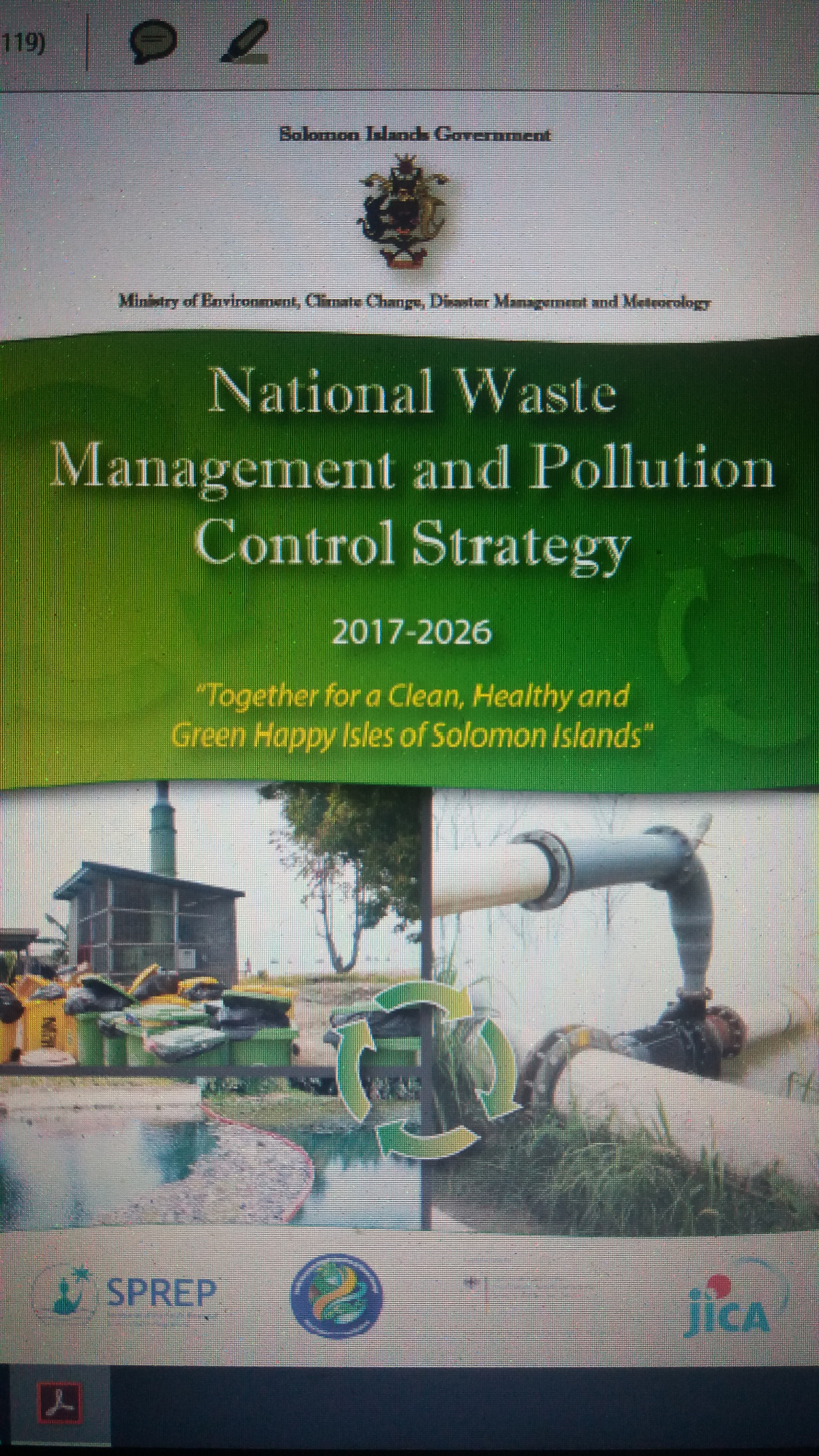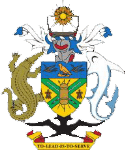Solomon Islands is a country that is heavily reliant on the extraction of its natural resources as a means of financing its economic growth aspirations.
Previously, this was done through activities such as logging and large scale plantations. However, more recently, mineral extraction through mining activities such as the one at Gold Ridge Mine and the extraction of other mineral resources have also been explored and engaged in as a means generating income for the country.
This move towards the extractive industries (oil, gas and mineral extraction) has had its benefits financially and created significant job and socio-economic benefits for a lot of Solomon Islanders.
However, there are some inherent risks as well. These include volatile economic growth; limited job creation; violent conflicts; corruption; environmental degradation; gender based violence; and the risk of spread of sexually transmitted diseases (STDs) among communities impacted by extraction activities. Such negative outcomes of resource extraction, however, are not inevitable. They can be tackled through effective strategies, legal frameworks and policies.
Participation of civil society, women’s organisations, indigenous peoples and other affected groups in the decision-making processes to ensure effective governance of the extractive sector is also important.
At the Government level, the Ministry of Environment, through the Environment and Conservation Division (ECD) is one of the ministries responsible for safeguarding Solomon Islanders against the negative impacts that may be brought about by extractive industries operating in the country.
Although licensing of these industries is handled through the Ministry of Mines, the necessary assessments to ensure that consent is given to these industries after due consideration of its impacts to the environment, is handled through the ECD within the Ministry of Environment (MECDM).
The Division’s work in this regard is guided by the Environment Act 1998 and the Environment Regulation 2008.
The Protected Areas Act 2010 and the Protected Areas Regulations 2012 also touch on the extractive industries in the sense that it restricts such activities in areas that are designated as having a protected area status under the Act.
The Division's work in this area in the Solomon Islands is supported by the work of other entities and initiatives such as the Solomon Islands Extractive Industries Transparency Initiative (SIETI).
- Details
- Category: Environment & Conservation
According to United Nations statistics, wildlife trafficking is among the five most lucrative illegal trades in the world, worth around USD$23 billion annually.
As poaching and wildlife trafficking are such lucrative trades, they are often complex in nature and have the end effect of eroding biodiversity, ecosystems and create insecurity that creates conflicts and fuels corruption.
The illegal trade, unabated, can also strip countries of their national assets, disrupt social cohesion and, undermine the rule of law.
This being the case, any effort to seriously tackle wildlife trafficking in Solomon Islands will not only require stronger institutions and law enforcement, but will also require a holistic approach to decisively deal with poverty, create economic opportunities and involve local communities in decision making, while at the same time, raising greater public awareness on the issue.
The main international agreement between governments that is aimed at protecting wild animals and plants from this illegal trade threatening their survival is the Convention on International Trade on Endangered Wild Flaura and Fauna or CITES in short.
Solomon Islands became party to the Convention in 2007.
The key legislations for the protection, conservation and management of wildlife in the Solomon Islands are the Wildlife Protection and Management Act 1998 and the Wildlife Protection and Management Regulation 2008.
These legislations regulate the exports and imports of certain animals and plants and comply with the country’s obligations under the CITES agreement.
The national law is looked after by the Environment & Conservation Division (ECD) under the Ministry of Environment, Climate Change, Disaster Management & Meteorology (MECDM) and is supported by other legislation, initiatives and documents such as the Royal Solomon Islands Police Force Environmental Crime Manual 2015.
- Details
- Category: Environment & Conservation
The Ministry of Environment, Climate Change, Disaster Management and Meteorology (MECDM) is responsible, through its Environment and Conservation Division (ECD) for ensuring that development activities are carried out in an environmentally friendly manner within the Solomon Islands.
The Division is responsible for Environmental Impact Assessments and the Issuing of Development Consents for development activities under the Environment Act 1998 and the Environment Regulation 2008.
The aim of these measures is to promote environmentally sound and sustainable development through the identification of appropriate mitigation measures.
They also protect the quality and productivity of the natural environment and play a role in predicting, avoiding, minimizing or offsetting the adverse significant environmental, social and other relevant effects of development proposals.
In terms of the formulation of effective policies, these measures also provide information for decision-making on the environmental consequences of any proposed developments.
- Details
- Category: Environment & Conservation
Chemicals and waste management in Solomon Islands is a concern of the Environment and Conservation Division (ECD) within the Ministry of Environment, Climate Change, Disaster Management and Meteorology (MECDM).
The Division’s work in this area is guided by the Environment Act 1998 and the Environment Regulation 2008 and Multilateral Environmental Agreements (MEA) such as the Waigani Convention and the Stockholm Convention.
In waste management, the ECD often works in close consultation with the Honiara City Council’s Health Division, which is responsible for rubbish collection (solid waste) within the Solomon Islands capital, Honiara and with regional partners such as the South Pacific Regional Environment Programme (SPREP) and other donors and NGOs such as the United Nations Development Programme (UNDP).
Chemical Waste Management
Chemicals are critical to the manufacture of many products and protection of human health, and an important contributor to the GDP and employment. However, without good management practices, chemicals and their hazardous wastes can pose significant risks to human health and the environment especially the poorest members of the global community.
In urban areas, low-income or minority populations are often exposed to hazardous chemicals and associated wastes in their jobs or because they reside in polluted areas.
In rural areas, most chemical exposure and environmental pollution is linked to the misuse of agricultural chemicals and pollution brought by waterways, impacting the natural resources upon which these communities depend.
The sound management of chemicals and wastes is an important to achieving sustainable, inclusive and resilient human development and the United Nations’ post MDG Sustainable Development Goals (SDGs).
- Details
- Category: Environment & Conservation
Conservation is the act of preserving or protecting natural assets such as plant and animal species, a habitat or an ecosystem service such as mangroves and rainforests for the benefit of current and future generations.
Human consumption and land use practices, as well as other activities bringing about climate change, have all contributed to these natural assets being put under a lot of pressure.
Unsustainable logging and mining practices as well as other development activities have led to diminishing natural rainforests in some parts of the country, increased soil degradation and threats to biodiversity and ecosystems.
Conservation efforts in Solomon Islands are done through legal means, and since the principle of ecosystem management puts forward that biodiversity should be managed at the ecosystem level, the Protected Areas Act 2010 and the Protected Areas Regulations 2012 are the country’s key conservation legislations.
These are supported by the Environment Act 1998 and the Wildlife Protection and Management Act 1998 and their respective Regulations.
Together they give natural assets such as wildlife species, coral reefs and rainforests the legal status they need to be protected from harmful human activities and interests.
All three of these Acts are administered by the Environment and Conservation Division (ECD) of the Ministry of Environment, Climate Change, Disaster Management and Meteorology (MECDM).
At the International level, conservation efforts are primarily encouraged by Multilateral Environmental Agreements (MEAs) such as the United Nations Convention on Biodiversity (UNCBD) and supported by other United Nations conventions such as the Convention Concerning the Protection of the World Cultural and Natural Heritage and the United Nations’ Sustainable Development Goals (SDGs).
The ECD is also responsible for implementing the interests of the UNCBD in Solomon Islands and World Heritage listed sites such as the East Rennell World Heritage Site.
Protected Areas
Protected areas are terrestrial and marine areas that are protected under the Protected Areas Act 2010 and its 2012 Regulation.
They include nature reserves, natural parks, nature monuments, resources management areas, closed areas and World Heritage Sites.
Heritage Sites
A World Heritage Site is a place (such as a building, city, complex, desert, forest, island, lake, monuments or mountains) that is listed by the United Nations Educational, Scientific and Cultural Organization (UNESCO) as being of special cultural or physical significance.
Community Based Resource Management
More than 80% percent of land in the Solomon islands and More than 90% of inshore coastal areas, islands and islets are under customary tenure. Under customary tenure systems particular groups of people (e.g. family units, clans or tribes) have primary rights to access and use these resources.
These rights are in principle, exclusionary, transferable, and enforceable. In Solomon Islands, community-based approaches build on these customary tenure and use rights as the foundations of efforts to manage resources.
By basing CBRM on the structures and systems that are already in place for governing within a community (e.g. customary tenure, chiefly system, other leadership arrangements etc.) management is more likely to be respected, complied with and fit that community’s particular situation.
In addition, there is currently a lack of financial and human resources at the government level to address resource management issues and enforce legislation in rural and remote community settings. The Solomon Islands Government is taking steps to address these capacity shortcomings; however it is recognized that the geographic expanse of Solomon Islands will always present a big challenge to centralized management (i.e. management by the national government).
- Details
- Category: Environment & Conservation
Subcategories
News

The New Solomon Islands Waste Management and Pollution Control Strategy 2017-2026 was formally endorsed by Cabinet in November 2017. It is yet to be officially launched, however, the Ministry is happy to share the e-copy of the strategy can be accessed from this Ministry's website and Solomon Islands Environment data portal (https://solomonislands-data.sprep.org).
The Ministry sincerely acknowledges all the relevant stakeholders coming from the Line Ministries, NGOs, Private Sectors and Academic Institution for the viable contributions during the review and validation workshop in November 2015 and September 2016. The successful outcome of the strategy is a result of the hardwork and contributions of everyone.
Source: ECD communications
Media Activity
- Solomon Islands launches second phase of the Pacific Ecosystem-based Adaptation to Climate Change - Solomon Islands Broadcasting Corporation Sep 13, 2023 | 17:00 pm
- Regional Pacific NDC Hub supports Solomon Islands with two major projects - Solomon Islands Broadcasting Corporation Sep 1, 2022 | 17:00 pm
- ENVIRONMENT MINISTRY TO LAUNCH CORPORATE & H.R.D PLANS - Solomon Islands Broadcasting Corporation Jun 2, 2015 | 17:00 pm
- WALE DISAPPOINTED OVER CLIMATE CHANGE ADAPTATION ALLOCATION - Solomon Islands Broadcasting Corporation Apr 21, 2015 | 17:00 pm
